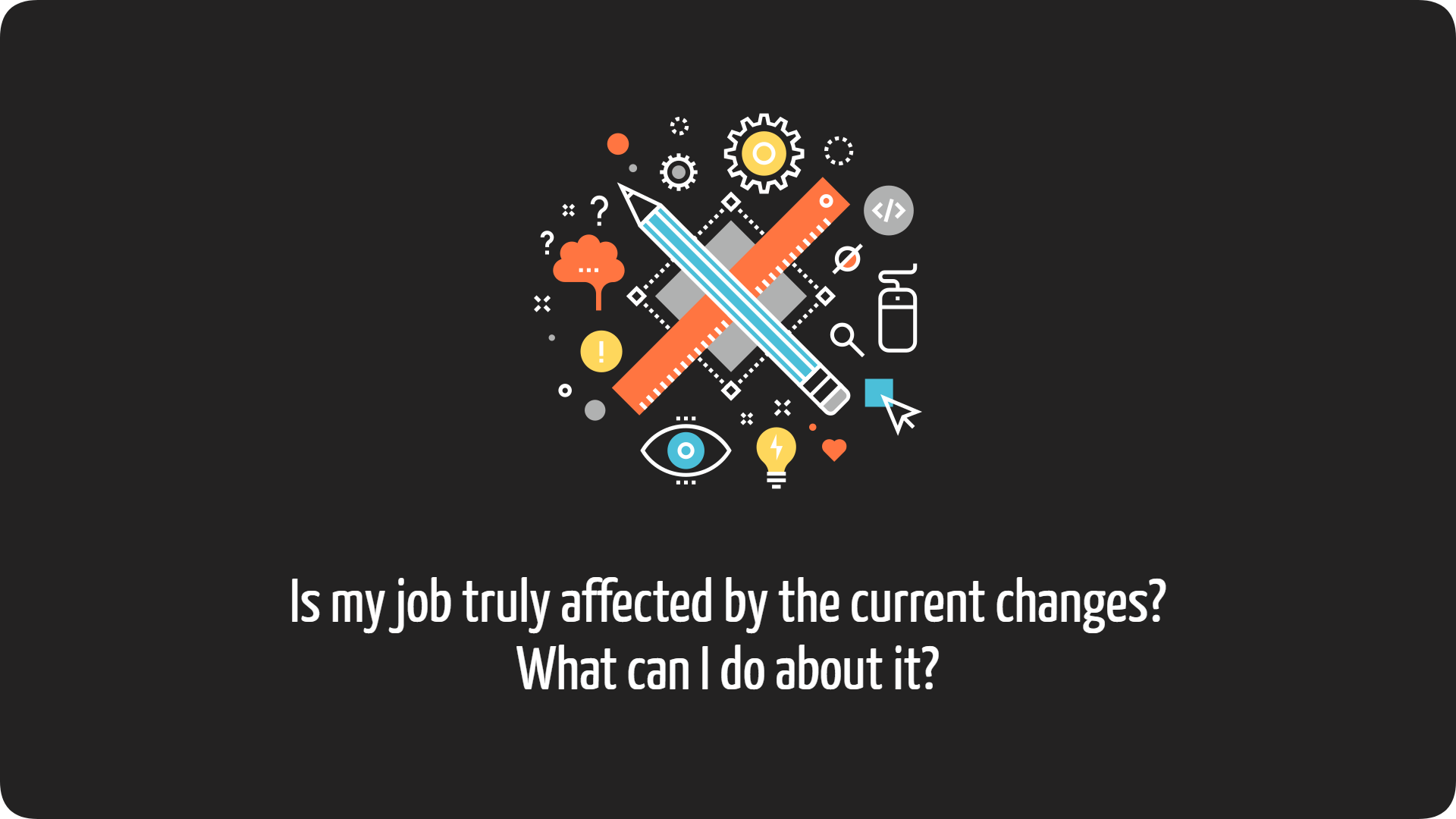
- Jun 29, 2020
- 0 Comment(s)
Is my job truly affected by the current changes? What can I do about it?
When many of the people surrounding you are being continuously alarmed about their job security, a simple and beneficial exercise would be to stop and inspect where you stand and go back to the basics. There are only two states for you to exist in the job market; unemployed and employed.
-
If you are unemployed, then you should be working on your professional profile, and apply to opportunities that match it.
-
If you are employed, a good question to answer would be, "Is my position truly in jeopardy? Or am I feeling this way because my company is under pressure?"
If you disconnect yourself from the repetitive news cycle and the unnecessary concerns introduced by others, you will be able to shift your focus to examine what is going on with your situation. Do that, and you might realize that either you are safe for now, or at least be able to develop a timeline of when you might not be. At that point, you can start to plan accordingly.
Your best course of action to increasing the probability of a good outcome would be to stop thinking of things you cannot control, and work on the only two fronts that you can control:
1. Staying? Increase your value to your employer by investing more time and effort.
It is not the place of an outsider to give generic advice on this, but you can speak to the management, review your annual objectives, maybe even revisit your job description. A short internal meditative thinking exercise on how to become better will open numerous paths to increasing your value. No matter what method you choose, you are the only, and also the best person to think and act on this, you need to do it.
2. Leaving? Prepare your professional profile before you need it.
Your professional profile consists of your CV, Cover Letter, and LinkedIn profile. It is your biography as viewed by recruiters, and its purpose is to secure interviews. It is essential to realize that other than personally knowing you, recruiters have nothing other than your professional profile to decide on your suitability for a job opportunity.
It is also imperative to have a general understanding of how our minds operate under pressure. When faced with a distressing situation - such as being terminated, our thinking becomes cloudy, and the decision-making faculties do not function well. Most job seekers respond quickly and make mistakes in two areas:
-
Applying haphazardly to all opportunities and receive no feedback while reaching out to numerous agencies and company recruiters with inadequate response.
-
Personally write their professional profile without extensive research or, worse, delegating the task to content writers who use generic templates to all profiles because they do not come from a recruitment background.
The above practices yield weak results and cause more frustration due to the lack of tangible results.
One prevention practice would be to proactively introduce Premortem; a managerial strategy in which you imagine that your project has failed, and then work backward to determine what potentially could lead to the failure.
In this context, the project would be building your profile and use it to secure a new position when needed. To apply to job opportunities properly and secure interviews, you need to understand the obstacles that your professional profile will encounter and decide on how you wish to solve them before you start applying so that your profile will not work against you. Proactively resolving them always beats trying to fix them when you are in distress.
At Seirati.com, we as recruiters, and based on research, have identified and created a service to solve the four obstacles of any job seeker:
1. The ATS Elimination: 75% of applications get automatically eliminated by the Applicant Tracking System (ATS). The system rejects the CV due to the wrong CV structure and not CV suitability for the role.
2. The 10-Second Scan: Experienced recruiters spend less than 10 seconds to screen a CV. They are looking for specific information in specific sections. Qualified CVs get passed over due to unclear poor design.
3. The Ordinary Profile: An average LinkedIn profile that lacks consistency and content gets overlooked by connections. An incomplete profile lowers the probability of a profile appearing in recruiter searches.
4. The Initial Interview: This is the screening part that focuses on your attitude and skills. Not being prepared for the initial call/video/interview is why you never hear back from recruiters.
You can overcome the four obstacles by purchasing our Seirati Package. We developed this service through a deep understanding of the barriers from the perspective of hiring clients to build a functional profile with a layout that maximizes the probability of solving the four obstacles.
This article is the first of a series that will enable you to understand what constitutes an excellent professional profile and provide information on how to overcome the problem when applying to opportunities. We will dissect, highlight, and explain each of them for you to have the knowledge and be ready when needed.
Next time we will explain Applicant Tracking Systems that most companies use, how they are affecting you, and how you can create an ATS compliant CV that ranks high in the algorithm and escape the 75% automatically eliminated.
Best of luck,
Wisam Abu Rahmoun


